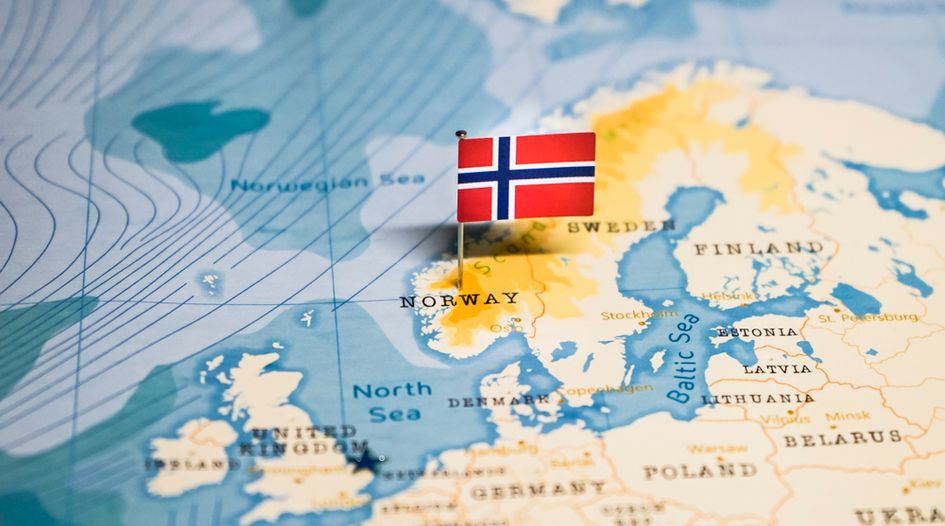How amendments to the Trademark Act have helped align Norway with the rest of Europe

Long-awaited changes to the Trademark Act in Norway are bringing the country up to speed with the rest of Europe. Going forward, it is crucial for professionals to understand the practical implications of these amendments and the impact they may have on their portfolio.
One of the most significant changes introduced by the amendments – as covered previously in "Pressure mounts to register black and white marks before adoption of new Trademarks Act" – was to the registration of colours as trademarks. Norwegian law was something of an outlier in Europe in that trademarks registered in black and white or grey tones also enjoyed protection in all other colours. This practice differed significantly from that of the EUIPO, where protection is only offered for the colours set out in the application. The Norwegian Industrial Property Office (NIPO) acknowledged that this was an issue and suggested changing it as far back as 2014 but had been prevented from doing so by existing Supreme Court rulings, some dating back decades. Once these were reconciled, Norwegian law could catch up with EUIPO law. However, this was not applied retroactively, so all marks applied for prior to 1 March 2023 were still awarded protection in all colours.
The amendments make significant changes to the inclusion of use/non-use in opposition, cancellations and invalidity actions against older trademarks. Previously, a junior applicant was not entitled to include these as part of proceedings. Instead, a separate case and cancellation action was required, in which they might be liable for the senior trademark owner’s legal costs should the action fail. This change means that a junior applicant facing opposition proceedings brought by a third party on the basis of senior rights can now require evidence of use of the senior trademark. This allows junior applicants to respond to an opposition by contesting the substantive claims (eg, likelihood of confusion) and draw on the potential non-use vulnerability in their response. Unlike at the EUIPO, there is no official fee for filing an opposition in Norway and it is still not possible to claim legal costs in opposition proceedings. It could be argued that this approach levels the playing field for new companies seeking to overturn older trademarks that are no longer in use without facing potential bankruptcy as a result of legal costs. Given that, costs can still be claimed for cancellation/invalidity actions in Norway, which – unlike at the EUIPO – have no upper limit.
Other major changes include the removal of the requirement for graphical representation within applications for video or sound marks, and an update to the bad-faith provision as grounds for refusal or invalidity. This offers more flexibility when assessing an application or registration and determining whether ‘bad faith’ should be interpreted in line with existing EU practice.
Further, trademark holders are now more likely to maintain their registration even if they did not meet the distinctiveness requirements when their application was granted – provided that they can demonstrate that they have acquired distinctiveness prior to any opposition or invalidity claims made against them. However, unanswered questions remain about who owns the rights to a trademark that has been established by use, or has acquired distinctiveness through use.
The new act has also introduced changes to the fee structure. The application and renewal fee for trademarks and collective marks – which previously included three classes of goods or services and an additional fee for each additional class beyond the third – now only covers one class, with an additional fee for each additional class. There have also been suggestions from the NIPO that an increase in filing and renewal fees is likely to be implemented from early next year, although this is yet to be confirmed.
Many of these changes have achieved their purpose in bringing Norway’s trademark law into line with the EUIPO’s practices, as well as offering more flexibility when it comes to grants and revocations. Time will tell what impact the new act will have on Norway’s trademark landscape and its implications for current and future rights holders.
WTR recommends
Inditex v EUIPO, or the importance of filing new evidence with conversion request following revocation for non-use
CJEU considers international jurisdiction over defendants from different member states
Reform of the Industrial Property Code: greater protection for designations of origin and seizures possible at all trade fairs
This is an Insight article, written by a selected partner as part of WTR's co-published content. Read more on Insight
Copyright © Law Business ResearchCompany Number: 03281866 VAT: GB 160 7529 10